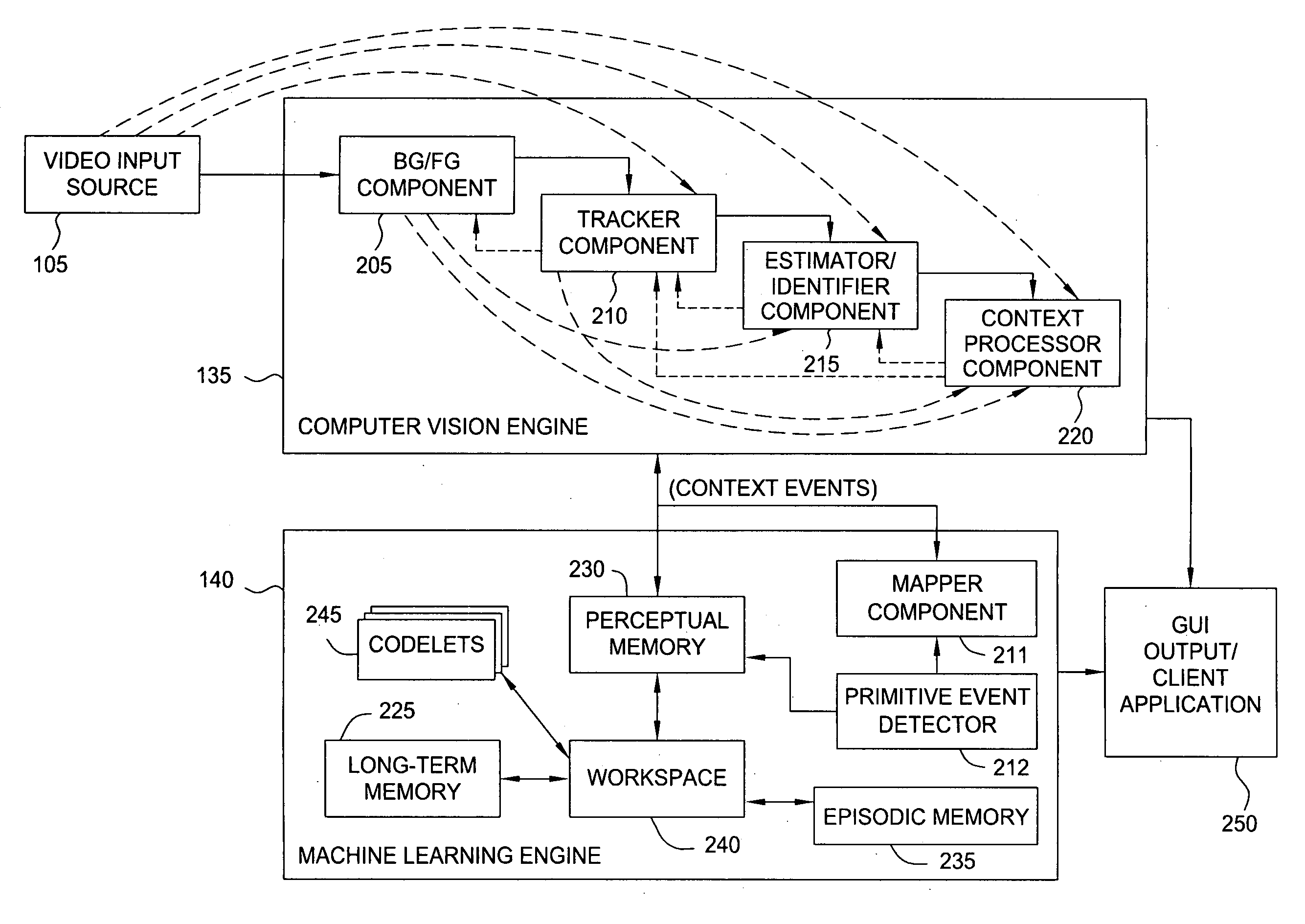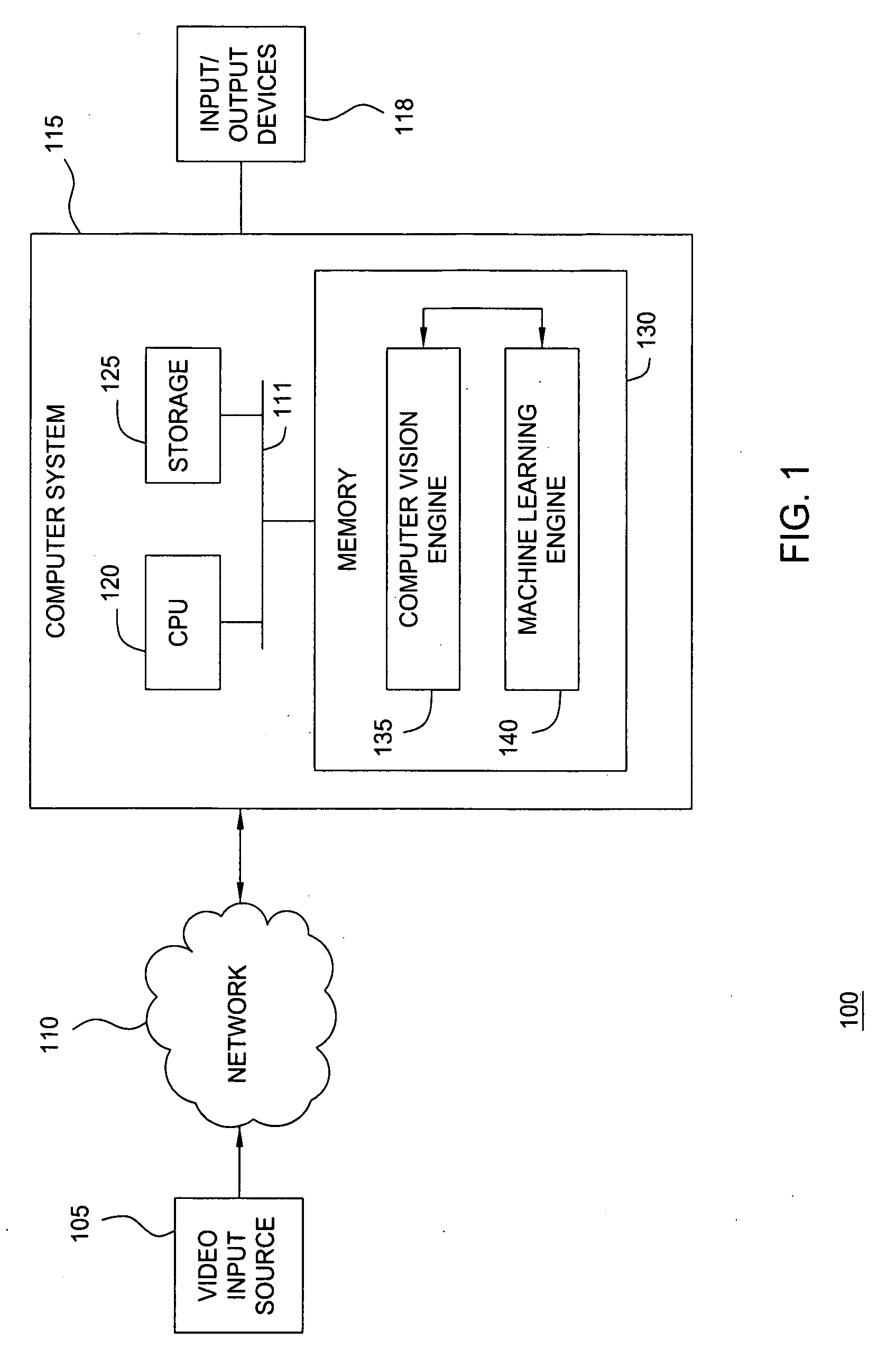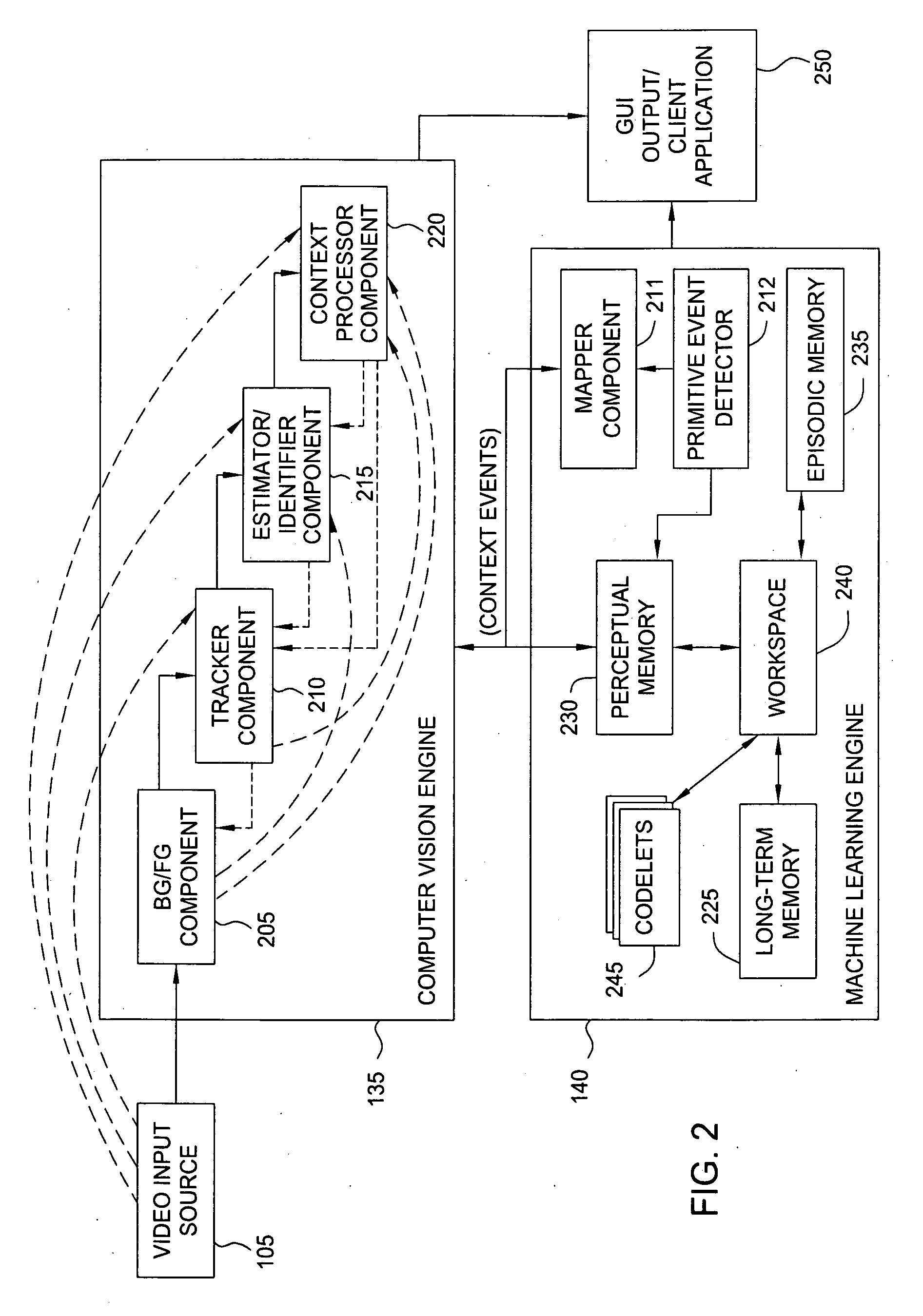Mapper component for multiple art networks in a video analysis system
a video analysis system and mapper technology, applied in the field of computational analysis of sequences of video frames, can solve the problems of system being generally incapable of recognizing behavior, video surveillance systems with recognition capabilities that are labor intensive and prohibitively expensive to maintain or adapt for different specialized applications, and video surveillance systems being typically incapable of recognizing new patterns of behavior
- Summary
- Abstract
- Description
- Claims
- Application Information
AI Technical Summary
Benefits of technology
Problems solved by technology
Method used
Image
Examples
Embodiment Construction
[0023]Embodiments of the invention provide a behavior-recognition system which may be configured to identify, learn, and recognize patterns of behavior by observing and evaluating events depicted by a sequence of video frames. In a particular embodiment, the behavior-recognition system may include both a computer vision engine and a machine learning engine. The computer vision engine may be configured to receive and evaluate a stream of video frames. Each frame may include data representing the color, grayscale, and / or intensity values for each pixel in the frame. A frame of video may be characterized using multiple color channels (e.g., a radiance value between 0-255 and a set of red, green, and blue (RGB) color channels values, each between 0-255). Further, the computer vision engine may generate a background image by observing the scene over a number of video frames. For example, consider a video camera trained on a stretch of a highway. In such a case, the background would inclu...
PUM
 Login to View More
Login to View More Abstract
Description
Claims
Application Information
 Login to View More
Login to View More - R&D
- Intellectual Property
- Life Sciences
- Materials
- Tech Scout
- Unparalleled Data Quality
- Higher Quality Content
- 60% Fewer Hallucinations
Browse by: Latest US Patents, China's latest patents, Technical Efficacy Thesaurus, Application Domain, Technology Topic, Popular Technical Reports.
© 2025 PatSnap. All rights reserved.Legal|Privacy policy|Modern Slavery Act Transparency Statement|Sitemap|About US| Contact US: help@patsnap.com



